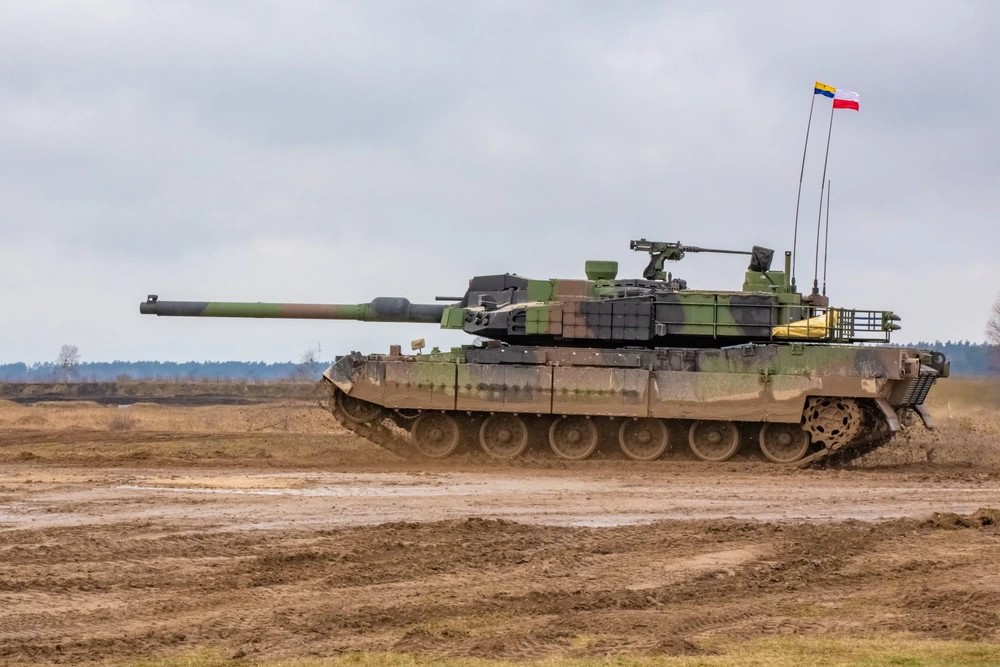

During the spring, Western media reported on leaks and speculations regarding creating a “Korean model” in Ukraine. This idea involved the establishment of two separate Ukrainian states, with one of them being under the control of Moscow. These reports were likely published by individuals within Western diplomacy who prioritize achieving peace, regardless of the cost. If you examine it closely, the comparison between the Korean and Ukrainian crisis is foolish and displays the eternal naivety of some parts of the West. Comparing the Korean situation with the Ukrainian crisis only in general terms has some sense. While the two have some similarities, there are also significant differences. However, even the most experienced experts probably didn’t anticipate the return of the “two new Koreas by the Dnieper River ” scenario, although not in the form initially envisioned by its advocates.
What are the potential outcomes of the recent meeting between Kim Jong Un and Vladimir Putin?
Russia’s closer ties with North Korea and Kim Jong Un’s visit to Vladimir Putin, including his journey in an armored train around Russia, have already set off major changes in international politics. Whether the Kremlin’s political camp is desperate or naive enough to resort to the Korean factor is unclear. Such a move has its consequences.
The specifics of the agreement between Kim and Putin are yet to be uncovered, and it remains uncertain whether they have reached any concrete decisions. However, North Korea may be already providing Russia with ammunition that could be used in an invasion of Ukraine. It’s estimated that North Korea could ultimately supply Russia with up to two million artillery shells. Despite this, it’s unlikely to alter Russia’s desperate situation significantly.
North Korea will likely provide a considerable amount of ammunition to Russia. However, Ukraine is expected to receive an equal or even greater supply of modern weaponry. The latest meeting occurred in the Ramstein format, and early reports indicate that Ukraine will receive a significant package of weapons. It may be due to the involvement of North Korea, an internationally isolated country. The intention could be to “punish” Russia and North Korea, who are viewed as threats to order in the Far East. This situation goes beyond Ukraine as a component of a more extensive game. It is a part of the bigger picture.
War in Ukraine. South Korea activation
Recently, South Korea has increased its support for Ukraine. Despite being initially cautious and indirect, South Korea now offers unrestrained support due to its concerns about the threats posed by Russia and China. However, South Korea aims to avoid escalating tensions. Its assistance to Ukraine has primarily been in the form of humanitarian aid and involves the swift delivery of equipment and ammunition to Western allies. It allows the supporting countries to distribute the supplies to Ukraine from their warehouses.
In the case of Poland, it was evident that South Korea was making efforts to deliver the K9 howitzers, K2 tanks, and FA-50 planes that had been ordered as quickly as possible. Additionally, South Korea agreed to transfer Krab howitzers, produced in cooperation between Poland, South Korea, and Britain, to Ukraine. Notably, South Korean Prime Minister Han Duck-soo visited Poland for an extended stay while Kim Jong Un was in Russia.
 Spring 2023, Warsaw. Presentation of the new South Korean K2 tank purchased by Poland. The flags of Poland and Ukraine are visible on the machine. Photo Sgt Matthiew Foster, Wikimedia Commons, CC
Spring 2023, Warsaw. Presentation of the new South Korean K2 tank purchased by Poland. The flags of Poland and Ukraine are visible on the machine. Photo Sgt Matthiew Foster, Wikimedia Commons, CC
Yet, Seoul vigorously denied unofficial reports of direct ammunition shipments from South Korea to Ukraine.
Following the meeting between Kim and Putin, Seoul sent Hyundai’s Rhino demining vehicles, identified as K600, to Ukraine. Although not considered a lethal weapon, the Ukrainians have faced significant challenges with mines during their counteroffensive. This weapon may help accelerate their counterattack, but it has been agreed between Seoul and Kyiv that it will only be used after the areas have been liberated, not during combat operations. It may take several years before the specific details of this agreement are fully disclosed.
Although South Korea is not obligated to assist Ukraine directly, it possesses vast industrial, technological, and economic resources. One possible way for South Korea to aid Ukraine is by helping its Western allies on a larger scale, which could indirectly support Ukraine and be meaningful.
If North Korea does not retreat, a conflict between North and South Korea will likely break out in Ukraine, with the involvement of the Ukrainians and the Russians as proxies. It is not the “Korean model by the Dnieper River” that Russia and some in the West had envisioned for Ukraine. However, under present circumstances, such an approach could benefit Ukraine and its supporting nations.
In addition, Japan is becoming increasingly active due to its concerns about North Korea, China, and Russia posing a threat to its security. Officially, Japan’s military policy has been primarily defensive since World War II. However, like Seoul, Tokyo has shown support for Ukraine in political, economic, and equipment-related matters. Given the circumstances, Japan will likely become further involved in the Ukrainian situation. It is worth noting that the Head of Japanese diplomacy visited Ukraine in September, indicating that Japan is taking this matter seriously.
Lastly, it is a priority for the United States to contain and isolate the North Korean government regardless of the administration in power. Washington openly acknowledges that it will not passively, as an eyewitness, observe the Kim regime’s efforts to enhance its status.
Marcin Herman/belsat.eu
Translated by PEV
The opinions and thoughts expressed in the text reflect only the author's views.

